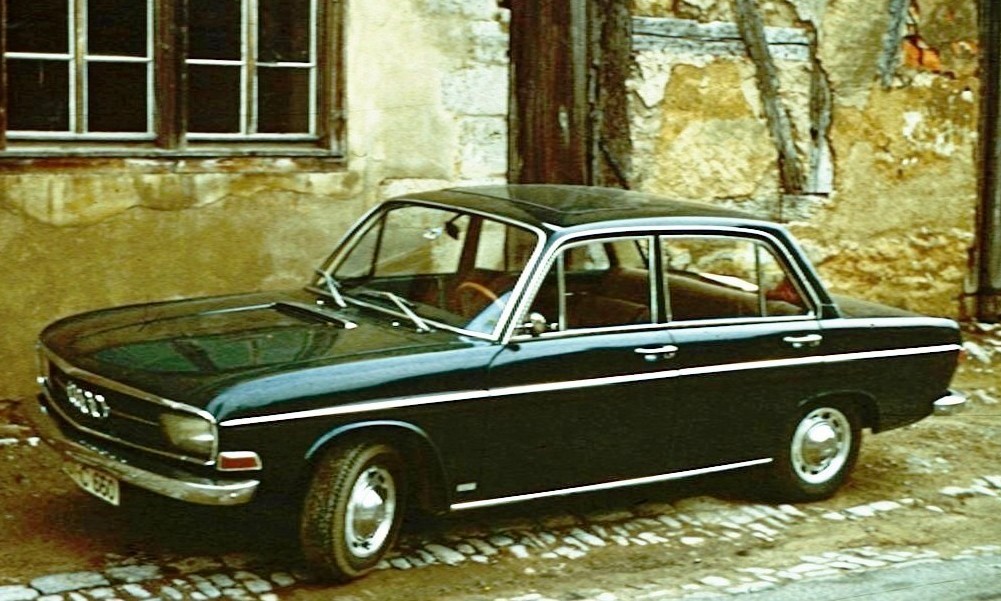-
Insurance
InsuranceAbout our productsLearn about insuringGet a quote Get current values, historical values, model history and more.
-
Valuation
ValuationHagerty valuation toolLook up a vehicle value Get current values, historical values, model history and more.
-
Events
EventsHagerty official eventsHagerty ClubhouseEvent calendar
-
Entertainment
EntertainmentMore to explore
- Portal login
1970 Audi 100
S Coupe 1.9 L
Vehicle values by condition
Fair
Condition 4
£10,100
#4 cars are daily drivers, with flaws visible to the naked eye. The chrome might have pitting or scratches, the windshield might be chipped.
Good
Condition 3
£15,400
#3 cars could possess some, but not all of the issues of a #4 car, but they will be balanced by other factors such as a fresh paint job or a new, correct interior.
Excellent
Condition 2
£18,900
#2 cars could win a local or regional show. They can be former #1 cars that have been driven or have aged. Seasoned observers will have to look closely for flaws.
Concours
Condition 1
£27,400
#1 vehicles are the best in the world. The visual image is of the best car, unmodified, in the right colours, driving onto the lawn at the finest concours.
Insurance premium for a
1970 Audi 100 S Coupe 1871
valued at £15,400
£144.41
/ year*
History of the 1968 - 1976 Audi 100

1968 - 1976 Audi 100
After a promising re-launch of the Audi nameplate with the 60, 75 and Super 90 models in 1965, Audi looked up-market, and targeted the BMW 1800/2000 and the Mercedes-Benz 190 series.
The result was the Audi 100 model, introduced in November 1968. It was produced as the S, LS and GS models, initially as a 2-door saloon, then in 1969 as a 4-door. A handsome coupe followed in 1970, looking somewhat like an Aston Martin DBS, with gills in the sloping C-pillar and similar tail lights.
The base engine for the Audi 100 was a 79hp, 1760cc, OHV 4-cylinder driving the front wheels. The S model offered 89hp and the LS was good for 99hp – almost the nominated 100. The coupe and GL eschewed the large square headlights for four round ones. Their 1871cc engine produced 115hp, and the coupe was good for 112 mph.
Despite a rather noisy engine, the Audi 100 was a huge hit, due to its larger size and luxurious trim. With production at Ingolstadt running flat-out, Volkswagen had to add another production line at Wolfsburg in 1970, making the 100 the first water-cooled car to be built there. A 3-speed automatic transmission was offered in 1970, and in 1971 the 500,000th Audi left the production line.
Audi was also fortunate that BMW ceased building its up-market 4-door 1800 and 2000 saloons in 1972, concentrating on the sporty but spartan 1602 and 2002 2-door models. The resulting gap in BMW’s line-up proved a huge bonus to Audi in the American market, which was already receptive to VW’s brand. Meanwhile BMW developed the 6-cylinder 2500/2800 and 3.0 series of saloons and coupes, which would establish the marque at a more luxurious level.
The 100 was updated in 1973, influenced by American regulations, and gained larger bumpers, a smaller grille and different tail lights. The 100 originally inherited torsion bar suspension all round from the preceding F103, but in 1973 the rear suspension was changed to coil springs. An economy version, the 100L, was introduced in 1975, borrowing the 1,588cc 110hp OHC engine from the Audi 80.
By the time the ground-breaking new 100 (5000 in the U.S.) was introduced in late 1976 Audi was a major player, and 798,787 of the first 100 series had been sold. The 100S Coupe had also developed a niche market, and 30,687 found buyers, despite performance being modest for such a stylish design.
For such a large production run, surviving Audi 100s are fairly rare. Rust was a perpetual problem and the 100S coupe was further handicapped by the fact that very few panels were common to the saloons. Electrical issues plagued the cars as they aged, and modest resale values did not encourage conservation. Be sure and insist on a detailed rust inspection before contemplating any purchase.
Hagerty Newsletter
Get your weekly dose of car news from Hagerty UK in your inbox

ADVERTISEMENT